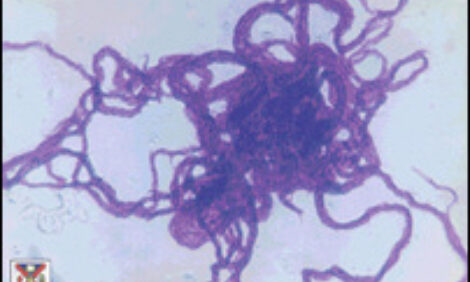



Is it time for Daisy to go on a truck ride?
The lower milk prices brought on from the coronavirus pandemic and the large volume of milk have caused critical cash-flow and long-term survivability issues on US dairy farms, writes David Marrison with The Ohio State University Extension.
Cost-cutting decisions must be made with full awareness of both short and long-term production and economic consequences.
One suggestion for reducing costs to improve short term cash flow is to re-evaluate your culling policy. Cows that were profitable to milk 6 months ago may not be anymore. As a quick rule of thumb, a Holstein eats 25 lb/day of dry matter (DM) to maintain herself plus 1.0 lb for each 3 lb of milk produced. So a cow producing 30 lb/day would eat about 35 lb/day of DM. A pound of DM in a lactating cow ration costs you $0.08 to 0.10. Thus, if Daisy produces 30 lb/day of milk, she is costing you around up to $3.50/day in feed alone. At $11/cwt, her milk is worth $3.30, an amount that most likely will not even cover her feed costs. If Daisy is more than 100 days from calving, she should go for a truck ride.
When all cash costs are considered, milk revenues must generally exceed feed costs by at least 20% to cover all variable costs. In most herds, cows under 35 lb/day of milk are cash drains and money losers. Also, if your pens are over-crowded (20 to 30% more cows than the number of stalls), culling some cows often increases the amount of milk given by the rest of the cows. You might get just as much milk out of 180 cows in your 160 stall pen as what you are getting from 200 cows right now.
Online Calculators
A few online calculators exist which producers can use to analyze which cows may need culled. The basic decision about when to voluntarily cull a cow is when she is no longer covering her variable costs of production. Variable costs are those costs that you can avoid in the short-run, such as feed. As you use these calculators, you will need to determine if other factors, such as some of your labor, utilities, etc., also fall into that category.
Some of these calculators include:
- University of Wisconsin-Madison, Dr. Mark Stephenson: Dairymarkets.org/tools/cullCow.html
- DairyVIP Program from the University of Florida: https://edis.ifas.ufl.edu/an177
Bottom Line
Unless your lender says otherwise, look at culling the bottom 5 to 10% of your lactating cows. Your feed bill will drop, milk shipped may not change, and cash flow will improve.


